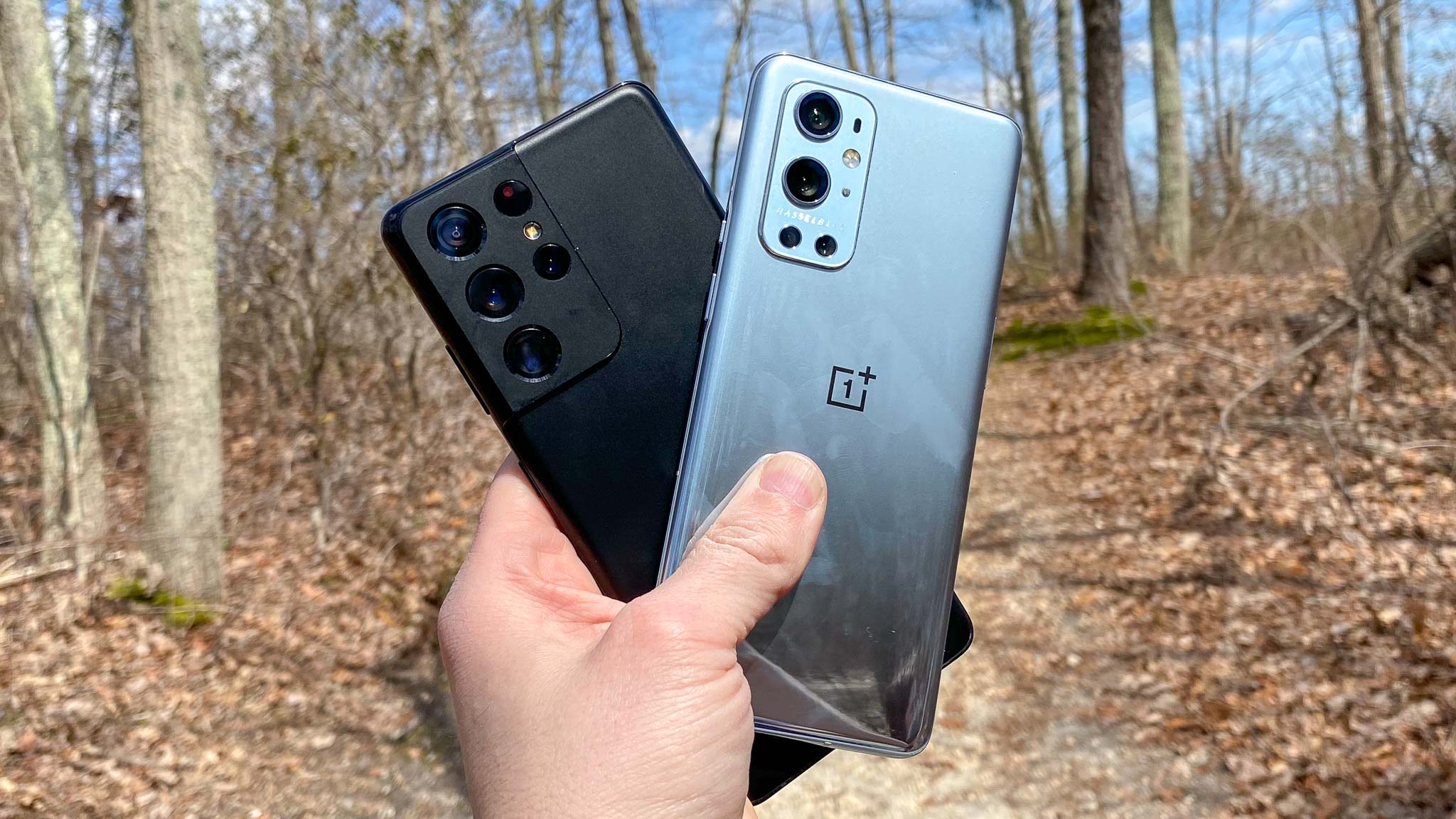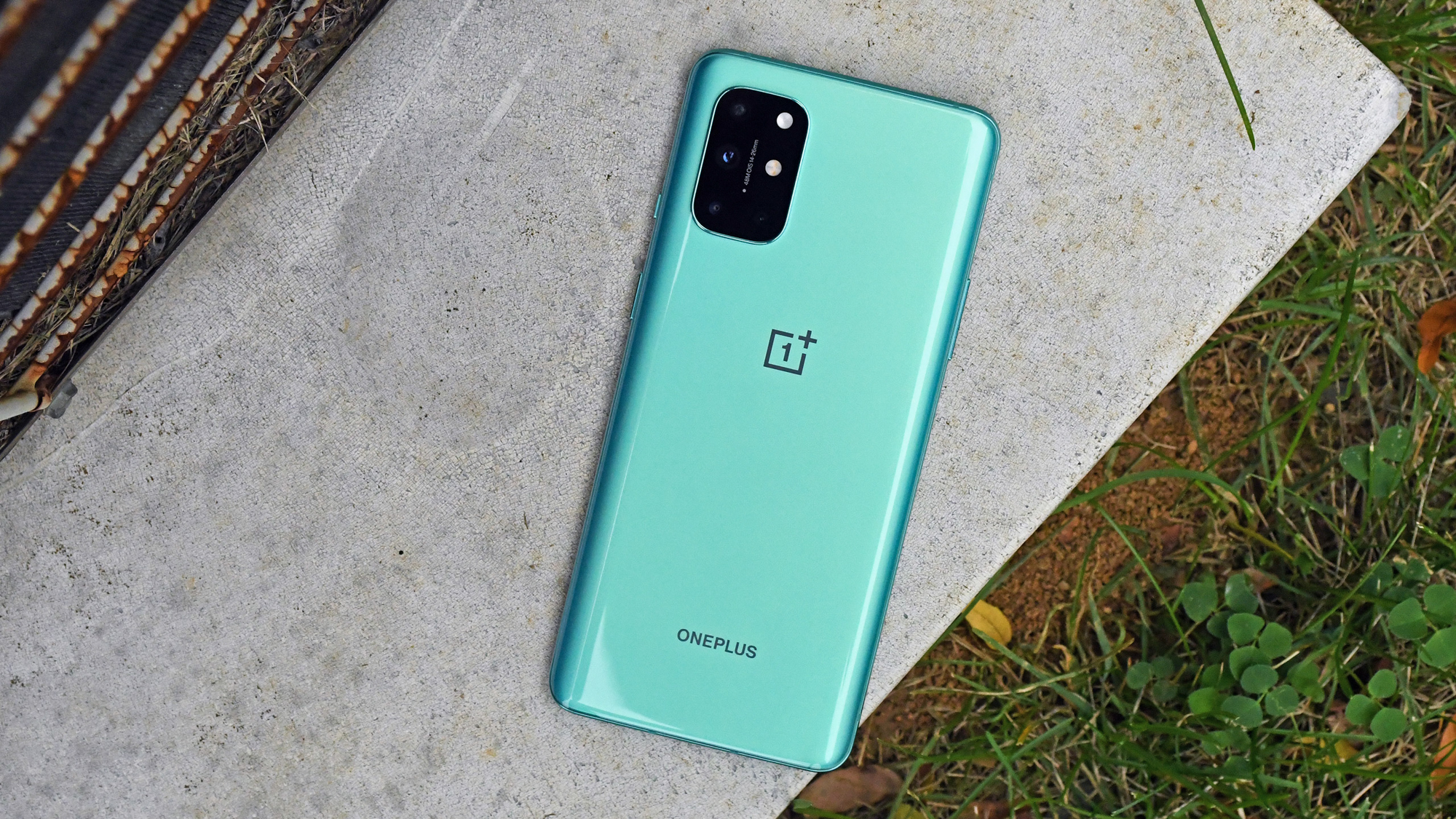OnePlus phones used to be my go-to recommendation — not anymore
Why I no longer fly the flag for OnePlus phones

Recommending an Android phone used to be so easy. While Tom’s Guide has its list of best Android phones for all manner of budgets, my default answer to “what phone should I get?” has been: “the latest OnePlus phone.” Not anymore.
Now making such a recommendation is no longer so easy. In fact, I think it’s downright difficult. OnePlus now has a suite of phones, some of which are no longer priced as keenly as the "flagship killers" that came before them.
- Steam Deck is an oddball gaming machine — and I love it
- Black Widow is a smash hit on Disney Plus — is that bad news for movie theaters?
- Plus: OnePlus Buds Pro to challenge AirPods Pro with ANC and Warp Charge
And with the likes of Samsung, Google and Apple all offering flagship phones (or at least those with flagship features) at or below the $800 mark, OnePlus’ traditional upper-mid-range smartphone stomping ground is looking increasingly crowded.
Farewell to the flagship killer

I’ve been using OnePlus phones since the OnePlus 5, so I was rather late to the party. But I came in when the company had refined OxygenOS to be a light reskin of Android and have handsets that sported nearly all of the features of flagship phones; wireless charging was one of the few omitted features, but proprietary super fast charging made up for that.
And every OnePlus phone I've used since delivered serious flagship performance, thanks to the latest Snapdragon 8-series chips and plenty of RAM. And all have had impressive screens and a build quality that snapped at the heels of Apple and Samsung.
These OnePlus phones came with prices that undercut iPhone, Pixel and Galaxy handsets of the same year, by several hundred dollars (in my case British pounds). So that meant it was easy to see past the camera performance of OnePlus phones, which has long been good to very good but never quite up there with full Android flagships, and easily fly the OnePlus flag.
Even when I was testing the latest high-end phone, when someone asked if they should get it, I’d simply respond they’re probably better off with OnePlus. And that's coming from someone who frickin’ loves flagship phones.
Get instant access to breaking news, the hottest reviews, great deals and helpful tips.
OnePlus phones not only offered screaming performance, a quality handset and plenty of storage for a good price, they also introduced new tech earlier than mainstream brands. The OnePlus 6 had the teardrop notch, the 6T had an optical under-display fingerprint scanner and the OnePlus 7 Pro brought in a 90Hz refresh rate and pop-up selfie camera. OnePlus was ahead of Samsung and left Apple in the dust when it came to pushing the envelope.
Speaking of the Pro, that’s when things started to change for OnePlus. In 2019 there were not two OnePlus phones across 12 months but four: the OnePlus 7 Pro and standard 7 and then the OnePlus 7T and 7T Pro. They all came with solid specs and prices that undercut the likes of the Galaxy S10, but equally they weren’t as affordable as they used to be; the $500 price point was well in the rear view mirror.
A year later and the OnePlus 8 Pro arrived (alongside the somewhat forgettable OnePlus 8) and brought in not only flagship specs but a flagship price. It delivered on its promises, with wireless charging and a camera array that traded blows with the Galaxy S20 and iPhone 11 Pro.
It was good to see OnePlus finally just make a true flagship. But then it had no flagship killer per se, as the OnePlus 8 was good yet more expensive than before and didn't necessarily offer the specs needed to torpedo rival Android handsets. And it was easily overshadowed by its Pro sibling.
Nevertheless, when I heard OnePlus wasn't making a “T” version of the 8 series, I got excited as the next phone could combine the best bits of the latter 8 Pro yet deliver a keenly-priced handset akin to the flagship killers of yore. In my OnePlus 8T review i found that wasn’t the case.
It’s a good phone but it launched at $749 in the U.S. and was arguably beaten by the Samsung Galaxy S20 FE with its excellent specs list and cameras, and the Google Pixel 5 with its class-leading brace of cameras, both of which cost under $700 at launch.
The OnePlus 8T is still a lovely phone, but it didn’t have that certain something that made OnePlus phones so special a couple of years before; it’s software wasn't as nice as before, performance was slick but not stunning, and the cameras were rather disappointing. Subsequent updates have improved the 8T but given the choice I’d reach for the Pixel 5 first.
Now in the year 2021, we have the OnePlus 9 and OnePlus 9 Pro. While both are excellent phones, they most certainly don’t have the flagship killer credentials OnePlus phones used to have, and that’s a little sad for a long-time fan and tricky for a tech journalist looking for easy phone recommendations.
OnePlus: A lot more phones equals maybe too many

Going full flagship is one thing, but OnePlus hasn't made things easier across the board either. While the OnePlus Nord looked like an exciting return to making well-equipped phones for budget prices, it arguably missed the mark.
The Nord is good, offering a lot for its price. But if you want a solid smartphone that has a solid camera and wonderfully clean software for $400 or less then it’s pretty difficult to not recommend the Google Pixel 4a. It doesn't help that the Nord isn’t available in the U.S. either. Nor will its successor, the OnePlus Nord 2, arrive on American soil.
However, the Nord was just tip of the spear for a range of affordable OnePlus phones. Now we have the OnePlus Nord N10 5G, the OnePlus Nord N200 5G and OnePlus Nord CE. These are all good, or shaping up to be good, budget smartphones offering decent specs like a 90Hz refresh rate display and adequate to good performance.
Sounds good? Well it is until you compared these phones against a suite of affordable handsets that have also embraced the more-for-less philosophy. There's the Realme GT with its 120Hz display and Snapdragon 888, Realme 8 5G, the Motorola Moto g100, Moto G Power, Redmi Note 10 Pro and the Samsung Galaxy A52 5G.
These phones offer some flagship specs, or features that were flagship-grade 12 months ago, for prices under (and in lot of cases well under) $500. So OnePlus’ current and next budget Nord phone faces a lot of stiff competition in this segment too.
Now, I can’t blame OnePlus for introducing a suite of phones to the market, nor do I think it’s losing its way. Rather, OnePlus is seemingly becoming more Samsung like, offering a myriad of phones to a variety of markets.
I’m sure that makes good business sense to folks better at metaphorical bean counting than I. But it doesn't change the feeling that the OnePlus I once raved about is no longer the OnePlus of today.
All filler, no killer

And that makes me sad as I feel that OnePlus, as successful as it now is, has lost its secret sauce. I feel no one smartphone maker now makes a proper flagship killer Android phone that blends impressive specs, performance, design and clean software in one handset.
Xiaomi makes phones with serious specs at good prices, but it doesn't offer the software experience or hardware design (arguably, as beauty is in the eye of the beholder) that OnePlus can. And America has said a resounding “no'' to letting Xiaomi handsets be sold on its shores.
Samsung’s Galaxy S20 FE is great but it’s still $700 and its One UI isn’t quite as clean as I’d like it to be. The Pixel 5 offers the best iteration of Android around, but it’s lacking in proper power and a 120Hz refresh rate.
It's not likely, but I’d love to see OnePlus return to its roots and just make one or two phones per year that are truly the best they can be for their price. Market factors and semiconductor shortage won’t make that easy.
But if OnePlus could tap into its closer partnership with sibling company Oppo, then perhaps we could see the return of the OnePlus flagship killer. The Oppo Find X3 Pro offers a serious rival to the Samsung Galaxy S21 Ultra, so OnePlus doesn't need to give parent company BBK Electronics another flagship phone.
Rather, OnePlus could use Oppo’s camera and image processing expertise, alongside the production lines they already share, to deliver a flagship killer handset OnePlus fans used to go wild for, yet also help tackle some of the camera shortcomings of those phones.
As it stands, the future still looks bright for OnePlus. I just hope it manages to retain the core of what made it great rather than just become another Samsung.

Roland Moore-Colyer a Managing Editor at Tom’s Guide with a focus on news, features and opinion articles. He often writes about gaming, phones, laptops and other bits of hardware; he’s also got an interest in cars. When not at his desk Roland can be found wandering around London, often with a look of curiosity on his face.
